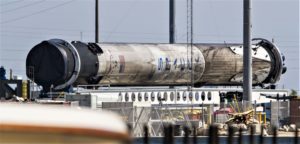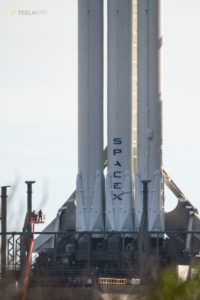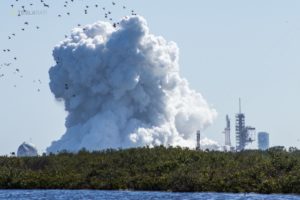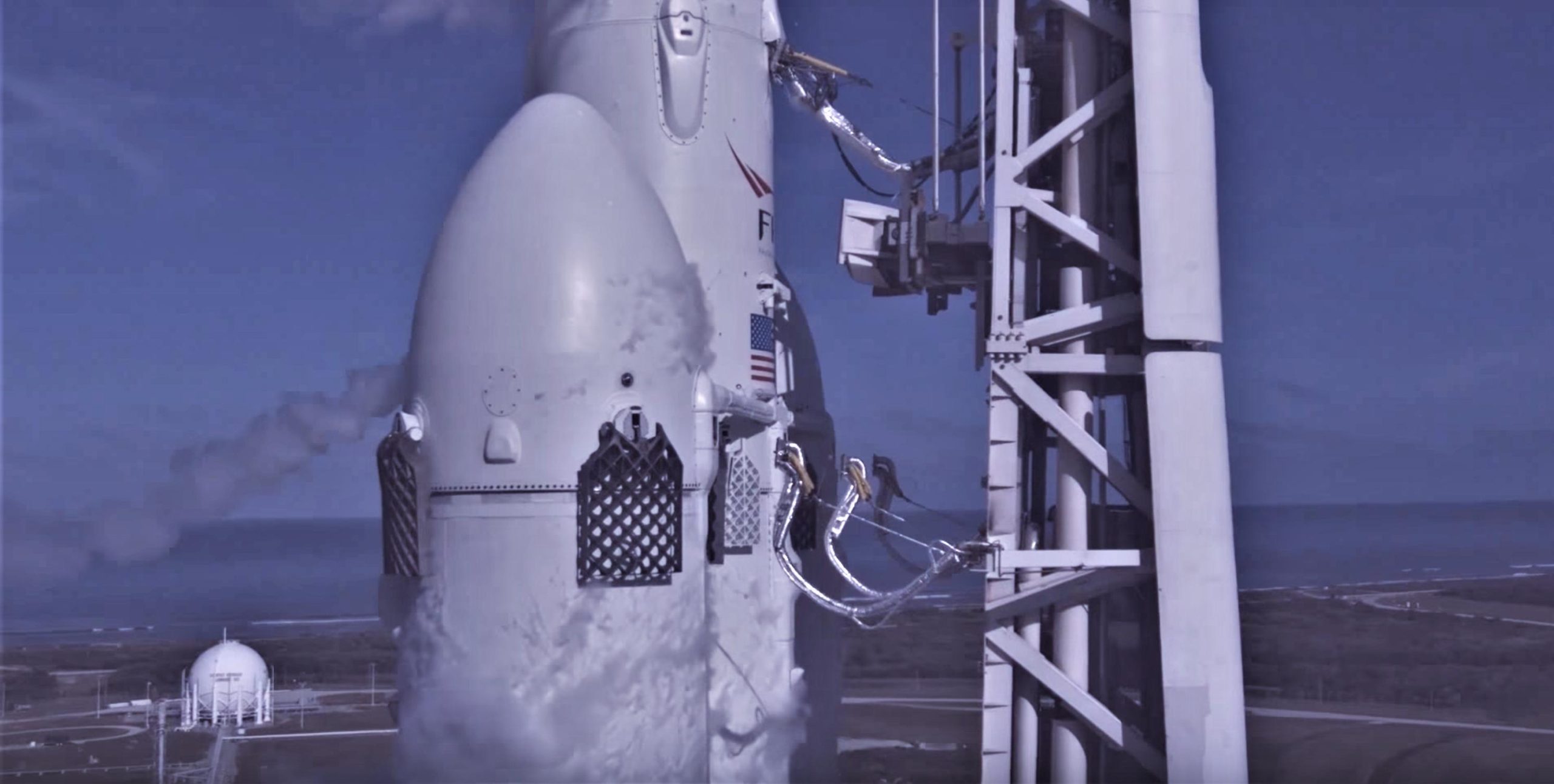
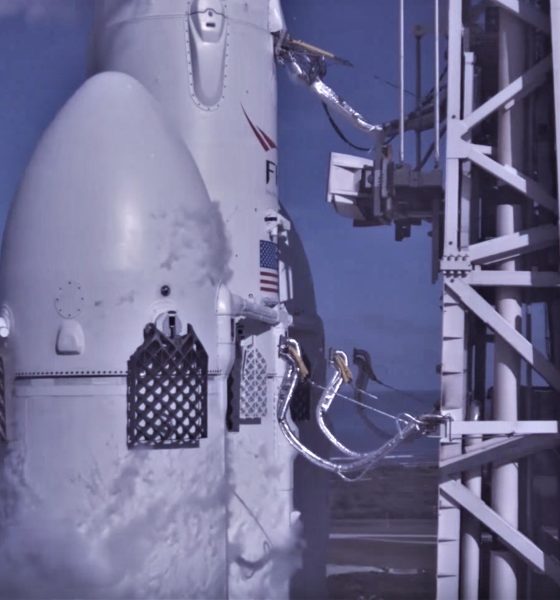
News
SpaceX’s Falcon Heavy secures second commercial launch contract in 9 days
Major broadband satellite operator Viasat has officially committed to launching one of its powerful next-generation Viasat-3 satellites on a SpaceX Falcon Heavy rocket, set to occur sometime between 2020 and 2022.
Nine days after Swedish satellite communications company OvZon made its own announcement of a Falcon Heavy launch contract, Viasat’s Falcon Heavy selection marks SpaceX’s third commercial launch contracted on the nascent heavy-lift rocket.
Viasat, SpaceX Enter Contract for a Future ViaSat-3 Satellite Launch: https://t.co/DOlUIcgPQF Photo Credit: @SpaceX #VS3 #ViasatInc pic.twitter.com/vM1duf1x41
— Viasat (@viasat) October 25, 2018
In 2016, Viasat announced that a planned launch contract with SpaceX for a heavy Viasat-2 satellite would be transferred to Arianespace to avoid major delays caused by Falcon Heavy’s torturous path to launch debut. As a contractual compromise, Viasat optioned Falcon Heavy for one of three launches of its three next-generation Viasat-3 satellites, an option that was exercised to become a true launch contract today.
Viasat’s 2016 decision ultimately proved to be expertly calculated, and SpaceX’s Falcon Heavy was effectively put on the back burner after a September 2016 failure, pushing its launch debut into 2018. Delays aside, Falcon Heavy ultimately debuted in February 2018 with a mission that both became a bit of an icon – CEO Elon Musk’s own Tesla Roadster and a SpaceX-suit-wearing mannequin were sent beyond Earth’s orbit – while also successfully demonstrating a particular launch capability of interest to certain high-value customers.
- It’s currently unclear whether B1046 or B1048 will become the first SpaceX rocket to fly three times. (Tom Cross)
- Falcon Heavy: it’s not small. (Tom Cross)
- The sheer power of Falcon Heavy is eminently clear in this beautiful capture by Tom Cross. (Tom Cross)
Coasting to success
During Falcon Heavy’s maiden launch, SpaceX took it upon itself to use the unique opportunity – a mission where the only payload at risk was functionally worthless – to test a number of technologies that the company had yet to personally prove out. In order to place certain payloads in orbits as convenient, efficient, and high-energy as possible, rocket upper stages can sometimes be required to spend hours orbiting Earth between two or more engine ignitions and burns.
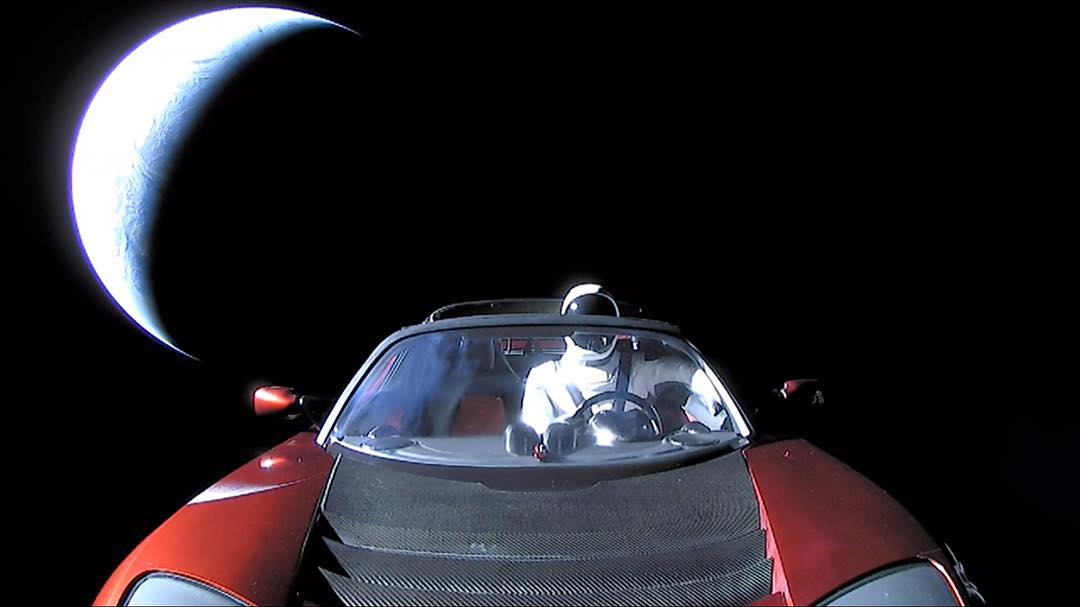
Once successfully in orbit, the performance potential of upper stages grows dramatically thanks to the increased efficiency of vacuum-optimized rocket engines and major improvements in thrust-to-weight ratios, having already consumed a majority of the fuel and oxidizer loaded prior to launch. The problem is that keeping a large upper stage alive in orbit – while preserving enough liquid propellant to perform its job – is extraordinarily difficult. Notably, the thermodynamic environment alone is a massive hurdle – aside from expanded power supplies, radiation-hardened or resilient avionics, and multi-engine-restart capabilities, some combination of coolers, insulation, and/or tank stirrers must be involved to prevent SpaceX’s already-supercooled liquid oxygen and kerosene (RP-1) from changing phases into a solid or a gas.
During Falcon Heavy’s debut, SpaceX demonstrated what must have been a nearly flawless six-hour coast of the rocket’s Falcon 9 upper stage – in the last four months alone, SpaceX has officially received three new Falcon Heavy contracts all hoping to take advantage of that long-coast capability. Critically, this allows SpaceX to send large satellites directly or almost directly to geostationary orbits (GEO) instead of a more common transfer orbit (GTO), saving satellites from spending weeks or months completing their own orbit-raising maneuvers and the hundreds or thousands of kilograms of propellant they require.
SpaceX's updated Falcon Heavy manifest:
– Arabsat 6A (NET early 2019)
– STP-2 (NET 2019)
– AFSPC-52 (NET September 2020)
– Ovzon (NET Q4 2020)
– Viasat-3 (2020-2022)Pending confirmed payload:
– Inmarsat— Michael Baylor (@MichaelBaylor_) October 25, 2018
Inmarsat, another long-time customer still in possession of old agreements for Falcon Heavy launches, may be next in line to announce firmer launch decisions for Global Xpress and Inmarsat 6 satellites once penciled in for Falcon Heavy in a 2014 contract – flight-ready hardware is expected to be ready for launch in the 2019-2021 timeframe.
For prompt updates, on-the-ground perspectives, and unique glimpses of SpaceX’s rocket recovery fleet check out our brand new LaunchPad and LandingZone newsletters!

Elon Musk
Elon Musk: Tesla Model Y is world’s best-selling car for 3rd year in a row
The Model Y has now established an impressive streak that would otherwise have been impossible before Tesla.

Elon Musk has announced that the Tesla Model Y has become the world’s best-selling car by volume for the third consecutive year, capping 2025 with another dominant performance.
The Model Y has now established an impressive streak that would otherwise have been impossible before Tesla.
Three years in a row
Musk posted on X: “Tesla Model Y is now officially the world’s best-selling car for the third year in a row!” The CEO’s comment echoed an update that Tesla included in its 2025 recap, which highlighted, among other things, the Model Y’s incredible streak.
The Model Y has held the title since 2023, outperforming traditional leaders like the Toyota RAV4 and Corolla thanks to its bang-for-the-buck nature and its stellar combination of practicality, performance, and tech. The Model Y is also lauded as one of the safest vehicles on the road, making it an ideal choice for families in key markets such as China.
An impressive 2025
The Model Y’s sales feat in 2025 is especially impressive considering the introduction of the vehicle’s new variant. Tesla’s changeover to the new Model Y across its global factories resulted in sales being paused for some time in the first quarter. As per Tesla’s Q1 2025 vehicle delivery and production report, “the changeover of Model Y lines across all four of our factories led to the loss of several weeks of production in Q1.”
This suggests that the Model Y’s sales remained strong in 2025 to the point where it could still claim the title of the world’s best-selling vehicle by volume, even with its sales being throttled during the first quarter of the year. It would then be interesting to see just how far the Model Y can go in 2026, especially considering the rollout of new variants like the six-seat extended wheelbase Model Y L, the affordable Model Y Standard, and the top-tier Model Y Performance.
News
Tesla shares epic 2025 recap video, confirms start of Cybercab production
The cinematic montage, posted by the official Tesla account on X, celebrated the company’s progress in EVs, energy, and Robotaxi development.
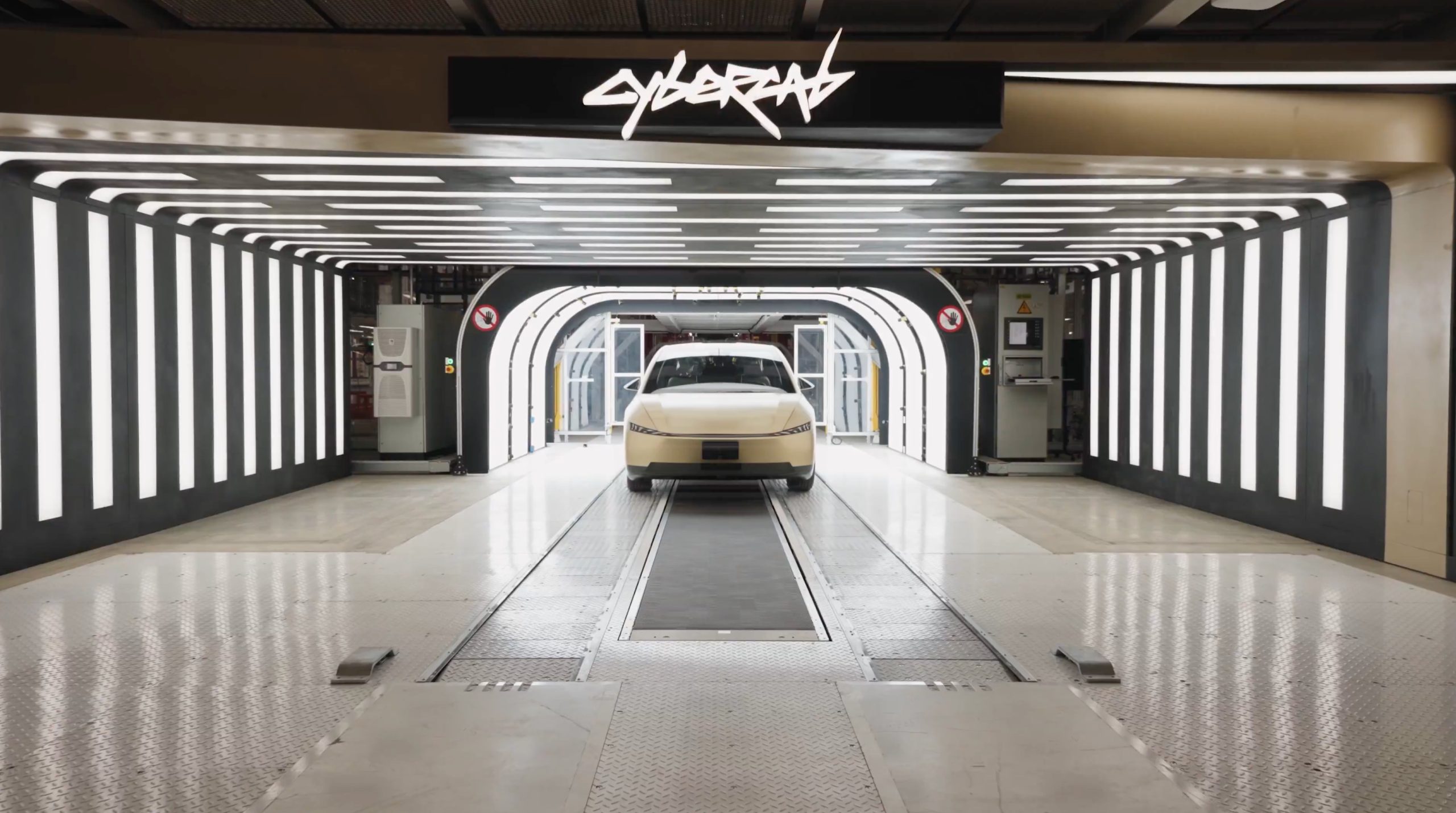
Tesla has released an epic year-in-review video for 2025, recapping some of its major achievements from refreshed models to autonomy breakthroughs and production ramps.
The cinematic montage, posted by the official Tesla account on X, celebrated the company’s progress in EVs, energy, and Robotaxi development while looking ahead to an even bigger 2026.
Tesla’s 2025 highlights recap
Tesla has had a busy 2025, as highlighted in the recap video. The video opened with Elon Musk explaining the company’s pursuit of sustainable abundance. A number of milestones were then highlighted, such as the rollout of FSD v14, Optimus’ numerous demos, the opening of the Tesla Diner in Hollywood, LA, the completion of the world’s first autonomous car delivery, and the launch of the Robotaxi network in Austin and the San Francisco Bay Area.
Tesla also highlighted several of its accomplishments over the year. As per the company, the Model Y was the year’s best-selling vehicle globally again, and Teslas became more affordable than ever thanks to the Model 3 and Model Y Standard. Other key models were also rolled out, such as the refreshed Model S and X, as well as the new Model Y, the new Model Y Performance, and the six-seat, extended wheelbase Model Y L.
The Megablock was also unveiled during the year, and the Supercharger Network grew by 18%. Over 1 million Powerwalls were also installed during the year, and the Cybertruck became the first EV truck to get both an IIHS Top Safety Pick+ award and an NHTSA 5-Star safety rating.
Cybercab production confirmed
Interestingly enough, Tesla also confirmed in its 2025 recap video that the production of the Cybercab has started. This bodes well for the vehicle, as it could result in the vehicle really being mass-produced in the first half of 2026. Elon Musk confirmed during the 2025 Annual Shareholder Meeting that Cybercab production should earnestly start around April 2026.
Musk has also noted that the Cybercab will be Tesla’s highest-volume vehicle yet, with the company aiming for an annual production rate of about 2 million units. “If you’ve seen the design of the Cybercab line, it doesn’t look like a normal car manufacturing line,” Musk said earlier this year. “It looks like a really high-speed consumer electronics line. In fact, the line will move so fast that actually people can’t even get close to it.”
News
Tesla Cybercab is changing the look of Austin’s roads, and it’s not even in production yet
Videos and photos showed the sleek, two-seat autonomous vehicles navigating traffic.
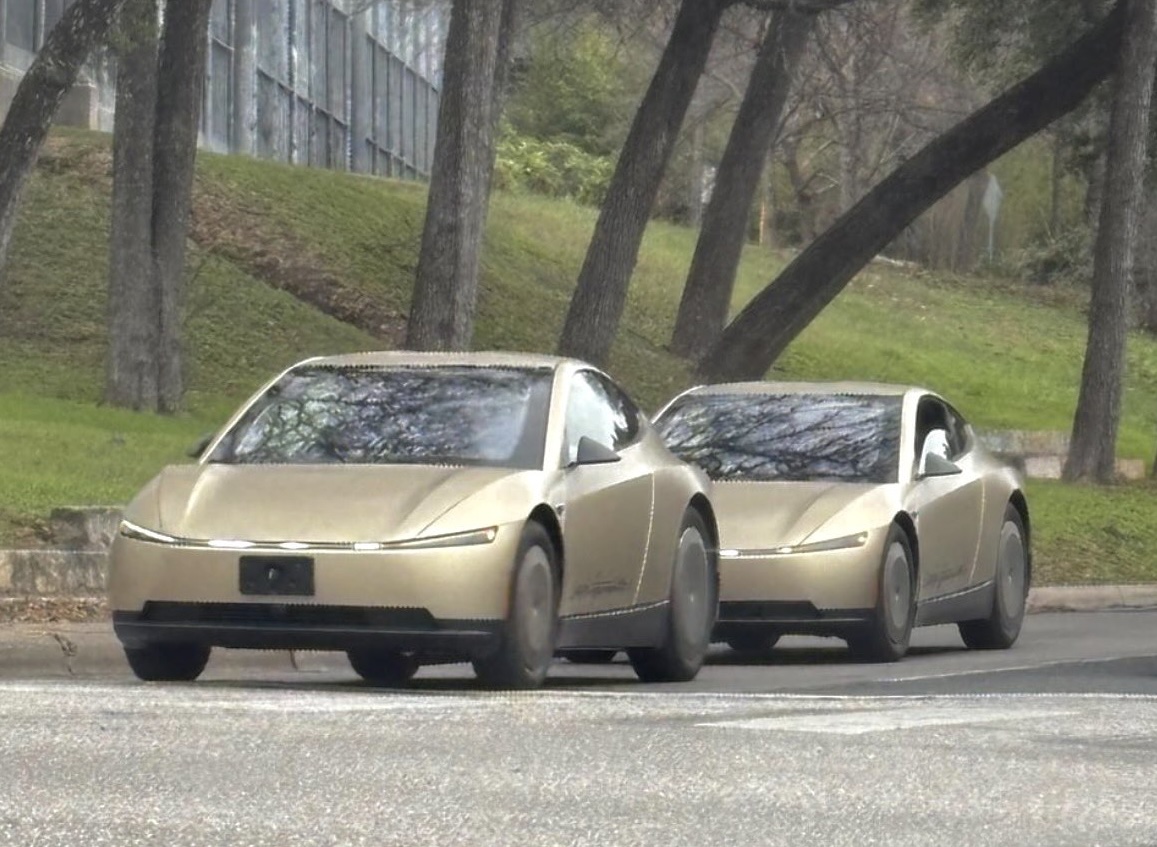
Even before entering production, Tesla’s Cybercab is already transforming the appearance of Austin’s streets, with multiple prototypes spotted testing in downtown areas recently.
Videos and photos showed the sleek, two-seat autonomous vehicles navigating traffic. Interestingly enough, the vehicles were equipped with temporary steering wheels and human safety drivers.
Recent Cybercab sightings
Over the weekend, enthusiasts captured footage of two Cybercabs driving together in central Austin, their futuristic silhouettes standing out amid regular traffic. While the vehicles featured temporary steering wheels and side mirrors for now, they retained their futuristic, production-intent exterior design.
Industry watcher Sawyer Merritt shared one of the vehicles’ videos, noting the increasing frequency of the autonomous two-seater’s sightings.
Previewing the autonomous future
Sightings of the Cybercab have been ramping in several key areas across the United States in recent weeks. Sightings include units at Apple’s Visitor Center in California, the Fremont factory test track, and in Austin’s streets.
The increased activity suggests that Tesla is in overdrive, validating the autonomous two-seater ahead of its planned volume production. Elon Musk confirmed at the 2025 Shareholder Meeting that manufacturing begins around April 2026 with ambitious targets, and during an All-Hands meeting earlier this year, Musk hinted that ultimately, Tesla’s factories should be able to produce one Cybercab every 10 seconds.
